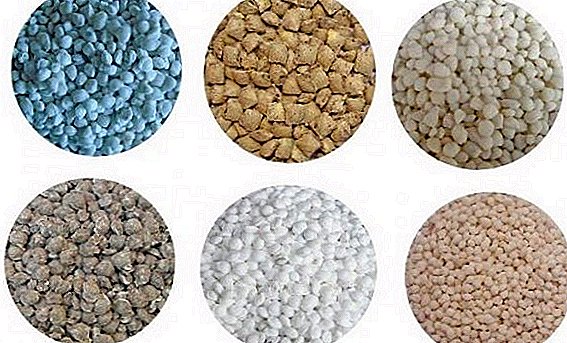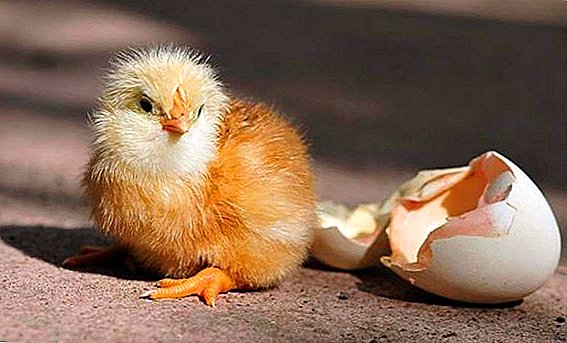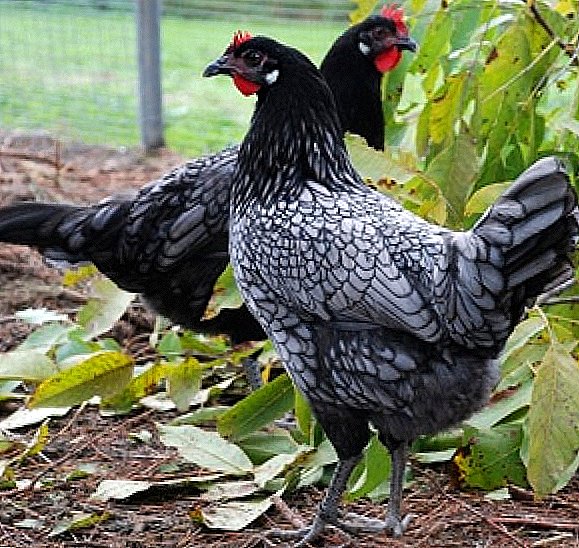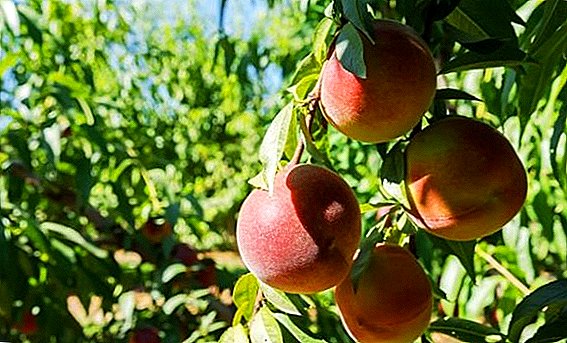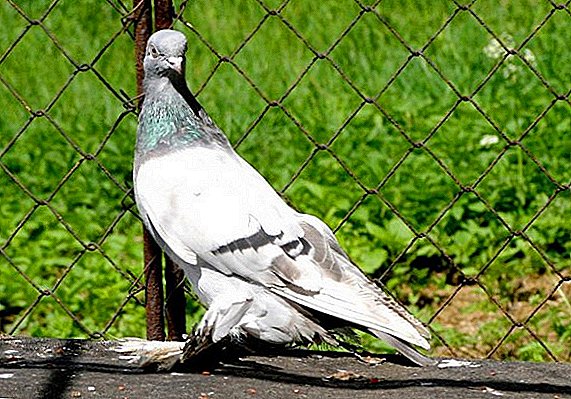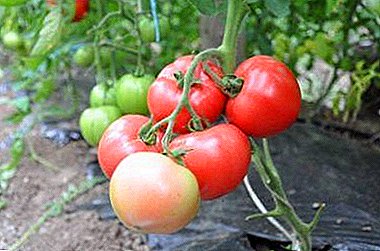
It would seem that something special can be in a bow? Habitual taste and aroma, causing tears in any housewife.
But it turns out that there is a huge number of varieties of this vegetable, each of which has not only its own ripening terms, but also its taste and healing qualities that are different from others.
Therefore, if you have all your life believed that you do not like onions and always picked it out of the dishes, you should still try to get acquainted with new varieties.
Perhaps some of them are just the same for you.
And in order to do this you did not have to surf the Internet space, we tried to collect all the best varieties in one article provided below.
How do onion varieties differ among themselves: main criteria
For those who are not familiar with this crop, the difference between the two varieties may seem completely insignificant. However, for experienced growers and culinary specialists, the variety is of decisive importance. In order to keep up to date and not quite experienced readers, let us briefly describe the most important criteria.
- Over the time of ripening the harvest onions can be:
- Early (the bed is in vegetation not more than 90 days).
- Mid-season (the vegetation of plants lasts about 110 days).
- Late varieties of onions (full maturity occurs in more than 120 days).
- For the nature of branching and the number of bulbs formed:
- Low-grade varieties - as a result of their growing season, no more than two bulbs are formed in the nest, although most often one.
- Medium nesting varieties can form from two to three bulbs.
- Polygamous - those that form five or more bulbs.
- For the size of the resulting crop ripening bulbs:
- Small, which weigh only 50 grams.
- Medium - the weight of one bulb can vary from 50 to 120 grams.
- Large bulbs with more than 120 grams.
- For the peculiarities of onion flavor and its smell:
- Sharp varieties.
- Semi-sharp
- Sweet
- For the method of cultivation emit:
- Varieties that can be grown with the help of sevka and sampling.
- Varieties propagated from seed in the annual crop, as well as using seeds.
- Onion varieties capable of breeding only in annual crops as a result of sowing seeds directly into the ground or with the help of seedlings.
"Strigunovsky Local" - the best early onion of all the old varieties

This old variety of onion is of Russian origin. Treats very sharp grades, is suitable for all types of processing and for the fresh use.
According to the classification of varieties of onions, "Strigunovsky Local" is considered to be low-nesting. The number of primordia, which one bulb has, usually does not exceed 4. The density of the bulbs is usually very high, its shape is rounded with small tapers up and down, which is typical of many varieties.
The color of both dry and succulent scales is usually light: the first usually become yellow for the ripening period, with a pinkish or grayish shade of the neck color characteristic of this variety, but the juicy part of the bulb is the usual white.
Small feature meritspossessed by the bow "Strigunovsky Local"
- Early and early variety of onions.
- The mass of one onion of "Strigunovsky Local" reaches indicators from 45 to 80 grams.
- High yield: planting with the help of a harness allows you to collect from 1 m2 from 1.2 to 3.3 kilograms of good onions.
- Excellent level of harvest.
- Bulb maturity by the time of harvesting is usually 49-97%, the weather conditions of the season are very important for this.
It is impossible to say something negative about this variety, because if there were a lot of them, the variety would not be so popular until today. True, many do not like his sharp taste.
Over the years, this variety has become widely zoned, because it can grow without problems in cool and hot climates. In the first case, the short ripening period of this onion is particularly important.
It can be grown both with the help of a crop (as a two-year culture), and by sowing seeds (as a one-year).
The most southern onion - grade "Golden"

This variety of onion is the result of breeding. It was obtained by Ukrainian scientists who crossed for this a very large group of varieties: "Balakleysky", "Valencia", "Golden Ball", "Krasnodar G-35", "Nosovsky 138" and "Pavlogradsky". The result of such effort was a very good mid-season variety.
One onion of this variety usually has 3 or 4 buds; they also have a round-flat shape, although some may have an elongate-oval shape.
It is clear from the name of the variety that the color of its top dry scales is light golden (under different growing conditions they can be both golden yellow and light brown). Sometimes there are bulbs with a slight pinkish tinge. The juicy part of the bulb has a white color, very rarely there is also a slight prozelen.
The taste of onion "Golden" spicy.
The variety bears fruit very well: when growing it from seeds from a bed area of 1 m2, it is easy to collect from 2.1 to 2.4 kilograms of crop, and from 1.6 to 2.6 from seeds grown by the seed method. Bulbs usually reach medium or large size - about 51-130 grams.
What are the main merits onion "Golden"?
- The high yield of a variety and its good maturity at the time of harvesting: when planted with a Sevka, it matures almost 100%, and by sowing, from 75% to 99%.
- The bow "Golden" is characterized by good layering, maintaining a good appearance and taste up to the beginning of the next growing season, and even longer.
- Small, allows to receive big bulbs.
As such, there are no restrictions on the cultivation of Golden variety onions. The only thing to consider is average ripening timethat do not allow to grow this variety in the northern regions of Russia.
Breeders who brought this variety of onions, recommend it for cultivation on the territory of the Transcarpathian and Kharkiv regions of Ukraine. Thus, we can conclude that the Zolotoy variety is more positive about the warm growing conditions, therefore even in central Russia it is a little risky to grow it.
It breeds like the previous variety - with seeds and seeds.
It is also interesting to read about growing leek
The sweetest onion of variety "Exibishn" - pleasure, not tears

This onion came to our region from Holland, where our native sharp onion does not have such popularity. By the way, we have this sweet taste of onion variety appeared not too long ago, but even those who simply hate ordinary onions and its taste have loved it.
The full vegetation of the beds with this onion is completed already in 115-120, that is, this onion should be attributed to medium late. Externally, the bulbs of the "Exibichen" variety can be distinguished by their oval shape and strong density.
The top dry scales of this variety usually have a yellow color, and juicy - completely white. Its productivity is very high., as even the mass of one bulb, which usually does not fall below 80 grams, may indicate.
Positive traits onion "Exhibition" - briefly about the main thing:
- The ability to grow high-grade bulbs from seeds in just one season.
- Sweet taste.
- Good resistance of this variety of bulb onions to diseases.
- High yield and large size bulbs.
Most of us are accustomed to breeding onions with a sevka, but this variety is annual and, accordingly, it reproduces only with the help of seeds. It is also not recommended by the seedling method to grow it.
Crops of this variety have a relatively short storage period. Perhaps this feature is dictated by a large number of sugars in the bulbs, which stimulates their decay.
Despite the late ripening period, this variety of onions can be grown in the middle lane and even slightly to the north. This contributes to its good stability and adaptability.
Bulb onion "Aleko" - purple decoration of dishes

According to its maturation period, this variety is middle-ripening, that is, full vegetation is completed in about 90-110 days.
Onion "Aleko" is considered single-starter varieties, which means its excellent suitability not only for obtaining good harvest of bulbs, but also a large amount of greenery.
In addition, for such a criterion as the number of formation of bulbs, this onion is a bright representative of two-three-varietal varieties capable of forming 2-3 new bulbs from one set. But, as it is not strange, even with this, their mass remains quite large - on average, from 90 to 105 grams.
The external characteristics of the onion "Aleko" are in the violet color of the outer dry scales. Also, although inside this bow is white, it has a pretty intense purple hue.
The shape of the lukowitz is rounded, very dense in structure. The taste of this onion is still quite spicy, giving the dishes not only a beautiful look, but also an interesting flavor note.
Virtues onions "Aleko" or, for which the variety is valued?
- Good yield and large bulb sizes.
- Beautiful color and rich sharp taste.
- Good onion suitability for long storage.
In general, this variety has almost no flaws. However, its resistance to various diseases is a little lame. In connection with these, it is imperative to take very careful care of the beds, and when the first signs of diseases appear, immediately start combating them.
This variety of onions occupies an honorable place in the State Register of the Russian Federation, and it has been zoned practically throughout its entire territory, with the exception of the Siberian region. However, it can also be grown in more southern countries, near the Black Sea coast.
It is able to multiply both with the help of a sevka, and sowing of seeds as an annual crop.
Timiryazevsky onions - what you need for cold climatic regions

This variety is also quite old and was obtained thanks to breeding methods. It was produced on the basis of the Rostov Onion, which provided Timiryazevsky with good stability.
It also belongs to one of the earliest ripening varieties of onion, which can boast high yields: from an area of 1 m2, up to 3.2 kilograms of good yield is usually obtained.
Its important feature is also the small presence of rudiments (only 2-3), as well as the small-nesting. This plant is also characterized by a rather dense bulb, with a rounded-flat shape and with a relatively small upward sprout. Weigh such bulbs on average from 49 to 70 grams.
The external characteristics of the Timiryazevsky onions are as follows: light brown (golden yellow) top dry scales, acquiring a gray tint closer to the neck. The juicy part of the bulb of this variety has a white color.
Benefits onions "Timiryazevsky" over other varieties:
- Onions have a good sharp taste and very early ripening.
- Aging is usually at 100% if the plants are not harmed by bad weather conditions.
- This variety of onions is stored not only for a long time, but also very well. The percentage of life can be even 95%.
The variety has no disadvantages. The only thing is that it can only be propagated at home from sevkov.
With excellent stability, high adaptability and very early ripening, onions "Timiryazevsky" can be grown in almost all regions. In particular, in Russia, it is found in the Volga region, and in the Urals, and even in the east and west of severe Siberia.
Growing onions: what is important for every gardener to know?

- By means of sevka onions can land both in the spring, and in the fall.
- For planting it is important to choose the right place: it should be well lit so that the leaves are strong and green; groundwater should not rise to the surface itself.
- Before planting, the bulbs are necessarily soaked with warm water, the tip can be slightly trimmed.
- Soil before planting onions fertilized with organic matter.
- The onion planting scheme will depend on the size of the future bulbs and on the low-grade or multi-onion variety of onions you have chosen.
- It is very important not to rush into planting, not to give the onion a lot of fertilizer, otherwise it can be turned into an arrow and the only sense that can be obtained from it is a large amount of fresh greens.
- With the help of seeds, onions are usually first grown as seedlings in boxes (often and directly in the garden) and when they reach the right size, they are transplanted as well as sevok in the beds.
- In the winter and when planting onions in early spring, the whole garden is recommended to cover with mulch.
Care of beds with onions
In general, onions do not require much care. However, there are some necessary aspects of care, without which the plant will not be able to please a full-fledged harvest.
First of all, it is regular watering. Usually they are held once a week, but depending on the type of soil and weather conditions, this regularity is either more frequent, or vice versa - they are made more rare.
As irrigation can also be carried out and feeding. To do this, chicken or cow manure is diluted in water, and this solution is poured into the aisle. If necessary, and low soil fertility, it is recommended to apply mineral fertilizers, nitrophoska for example.
The soil under the bed with a bow must be regularly plowed. This will help saturate the soil with the necessary oxygen onions. In addition, weeds are extremely undesirable on beds with onions. They should also be regularly removed.
Winter onions must be covered for the winter, especially if it is grown in colder regions.
If you detect any diseases of onions, plants and the soil must be treated with special means.




